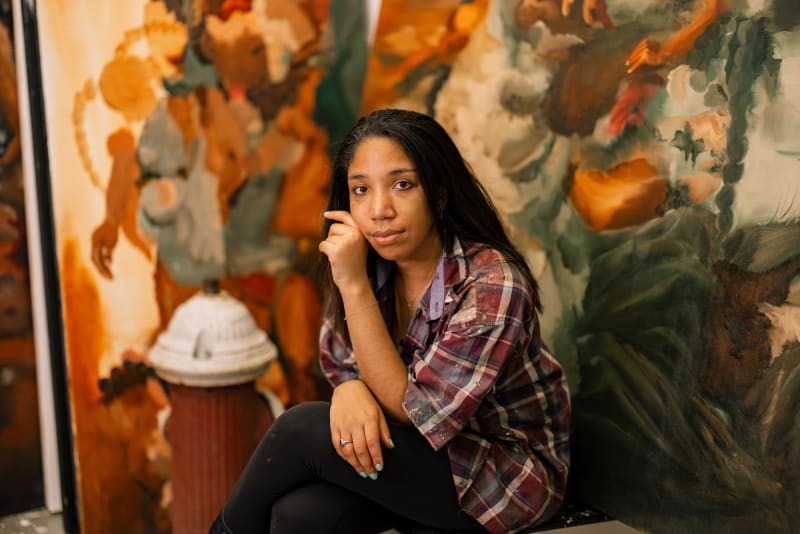Debra Cartwright’s Abstract Paintings Examine the History of Medical Science and Black WomanhooD
Debra Cartwright’s oil paintings integrate the history of Western gynecology with the representation of Black womanhood. Cartwright’s paintings seduce the viewer on first sight through their use of a muted, earth-tone color palette and the combination of abstraction and figuration. We can barely identify parts of the body, like a torso, buttocks, or braids. Over time, however, the seduction unravels as we begin to see blood, flesh, and possibly organs.
Cartwright’s paintings wrestle with the painful history of using enslaved women as surgical test subjects (often unanesthetized) in early gynecological medicine, as led by the work of American physician James Marion Sims.
Born in Annapolis, Maryland, and currently based in New York, Cartwright brings her alluring new body of work to European audiences with her solo exhibition “Phantasmatic Figures” at Berlin’s Bode gallery, on view through March 19th. The exhibition—which is a partial expansion of her 2022 MFA thesis show at Rutgers University—is largely informed by Cartwright’s childhood experience of seeing medical illustration books while waiting in her mother’s office, who was a gynecologist. Seeing the body abstracted from its whole in such a way ignited a spark for the artist to consider how the body is commodified.
The emerging painter is heavily influenced by the work of Black feminist scholar Saidiya Hartman, who crafted the practice of creating new stories around history that has been forgotten. In her work, Cartwright honors the unnamed or later named enslaved women of Sim’s medical studies. These women’s histories are fragmented and are often only identifiable by their first name in record books (Betsy, Lucy, and Anarcha, for example). By naming them in her written work for the show, Cartwright hopes to expand the audience’s imagination of what these women’s lives could have been.
“I thinly paint floating silhouettes and braids—moving in a psychological space of memory, emotion, and experience,” Cartwright wrote in the show’s press release. Her paintings function like a painterly palimpsest of history. Cartwright’s bodies collide into the other objects and colors on the canvas, lending her works a densely layered quality, which allows her to build upon this metaphor and practice of uncovering a history while adding more to it.
Through this layering, Cartwright intentionally abstracts the body and challenges how bodies are viewed, with the goal of altering her audience’s perceptions of Black womanhood. “I think the collective reach for abstraction is a reaction to the anxiety of the world we’re living in,” Cartwright recently wrote to Artsy via email. “We all want to reimagine the structures that are failing us. I read a lot of Octavia Butler [and she] dared to imagine worlds where new rules and systems were created. Abstraction lends to this reimagination of collective connecting.”
For Cartwright, the rise of anatomical drawings goes hand in hand with the use of oil painting in the classical era—both had intentions of creating lifelike figures that feel real to their viewer. “Oil was created for flesh as countless painters in history have stated…so I take my sensitivity to application very seriously,” Cartwright wrote. “I’m building out these imagined worlds of real women so with each body part, each movement, I [aim] to honor the real person.”
Despite the darker tone of her work, Cartwright noted that the response to it has been positive from collectors, particularly those who appreciate the academic rigor of practice.
Ultimately, Cartwright’s abstracted figuration aims to reimagine the histories and bodies of Black women whose flesh was the underbelly for modern science. “We’re missing so much biographical information from Black women in American history,” she wrote, “so to be able to use secondary sources to inform a life that may have been lived, to be able to connect the pieces of our lost histories, is healing.”
